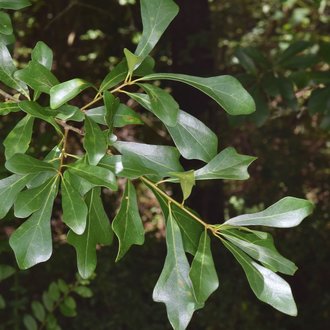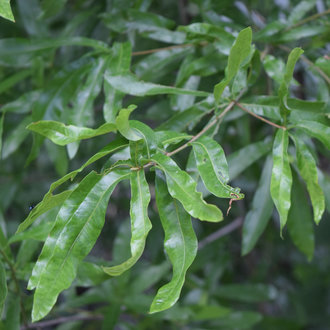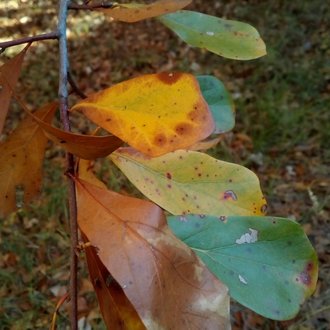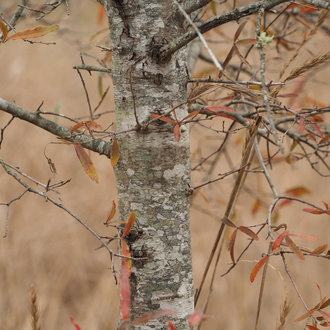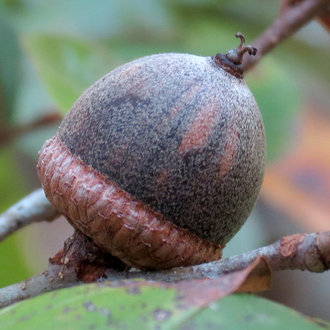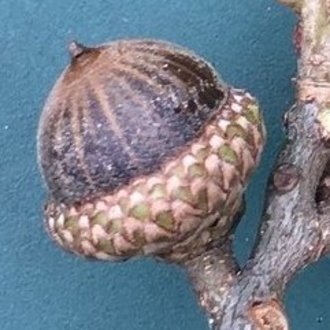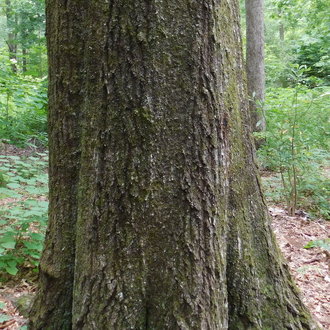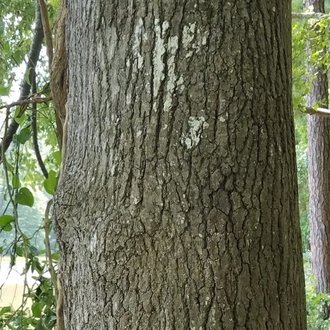Water Oak vs Willow Oak
Water oak and willow oak are often confused; they grow together in bottomlands in the southeastern US, and have similar growth habits, bark, and acorns, and both have leaves that lack the lobing of typical oak leaves. They are easily distinguished by differences in their leaves, but they also have subtle differences in acorns and bark. Water oak prefers sites slightly better-drained than willow oak, and is also found on a wider range of sites, sometimes occurring on mesic uplands; willow oak is rare on uplands, only occurring locally on poorly-drained sites.
Water Oak (Quercus nigra) | Willow Oak (Quercus phellos) |
A red oak of wet areas in the south, whose tardily-deciduous leaves have a distinct, spatula-like shape. | An oak native to poorly-drained bottomlands in the southeastern U.S., named for the willow-like shape of its leaves. |
Leaves taper gradually to a narrow point of attachment at the base, and widen to a blunt diamond-shaped tip. Photo © skitterbug, CC BY 4.0. | Longer leaves that are more consistent in width along their length, broader at the base but not widening at the tip. Photo © , CC BY-SA 4.0. |
Tardily deciduous to semi-evergreen; this photo from late November shows numerous green leaves still remaining. Saplings occasionally may show some red fall color but many trees show only green, yellow, and brown. Photo © C., Public Domain. | Fully deciduous. Few leaves are retained in winter and those that are retained are less likely to have much green on them. Leaves more likely to turn red in fall. Photo © mefisher, Public Domain. |
Acorns average slightly larger, and more ovoid (similar in height and width.) Acorn caps cover less of the nut, on average. Photo © Katja Schulz, CC BY 4.0. | Acorns average slightly smaller, and flatter (short relative to their width.) Acorn cap covers slightly more of the nut on average. Photo © Alona Bookbinder, CC BY-SA 4.0. |
Bark averages slightly darker. Fissures in bark of mature trees average slightly shallower. Photo © Camden Davis, CC BY 4.0. | Bark averages slightly lighter in color. Fissures in bark on mature trees average slightly deeper. Photo © Ava, Public Domain. |
References & External Resources
These short lists show only links helpful for ID. For a complete list of references and resources also covering other aspects of ecology, visit the links section of the full article on each plant, which is the first entry here.



